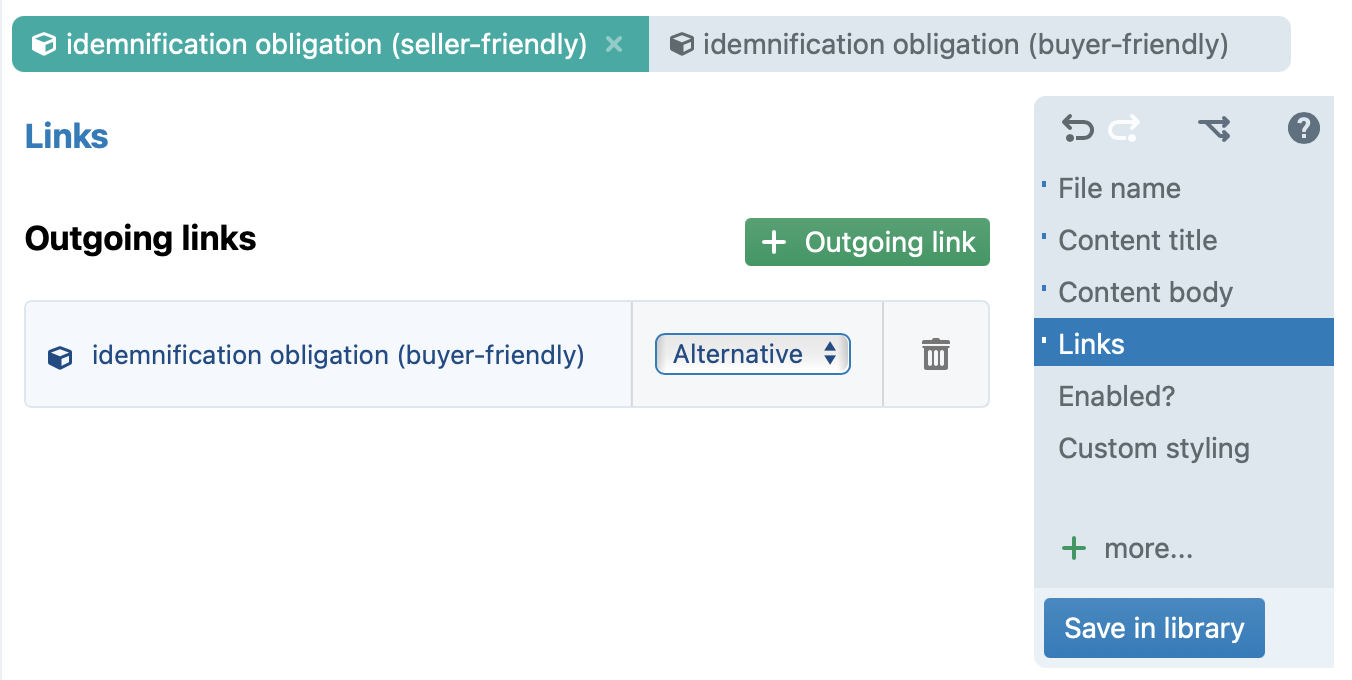In Assemble Document mode, the alternative symbol ![]() shows you which alternatives are available for a given clause. Clicking this symbol gives you a shortlist of available alternatives which you can then insert by simply clicking one.
shows you which alternatives are available for a given clause. Clicking this symbol gives you a shortlist of available alternatives which you can then insert by simply clicking one.
If this symbol is not visible, you must enable it in the document’s options menu
at the right side.
But how do you designate which clauses are linked together as alternatives?
Start by opening a clause in the clause editor, then navigate to the links tab on the right-hand side. Click the  button. This will open a prompt allowing you to navigate to the clause you wish to indicate as the alternative. Do so and when you have found it, select
button. This will open a prompt allowing you to navigate to the clause you wish to indicate as the alternative. Do so and when you have found it, select  to create a link between the two clauses.
to create a link between the two clauses.
What you see then should look something like this example:

Note that ClauseBase recognizes the fact that you have linked two clauses together and so will automatically designate the two as alternatives since that is the only relation two clauses can have. If on the other hand you would like a concept to a clause, you could choose between different possible relations.
Also note that the link created in this example designates an outgoing link from the seller-friendly clause to the buyer-friendly clause. If you take a look at the links tab from the clause you linked to, in this case the buyer-friendly version of the clause, you will see this:

This “incoming link” shows you the link that was made from the seller-friendly clause and also shows you that the relationship with this clause is that is is an alternative of the former. This way you do not have to make the connection from the two sides.